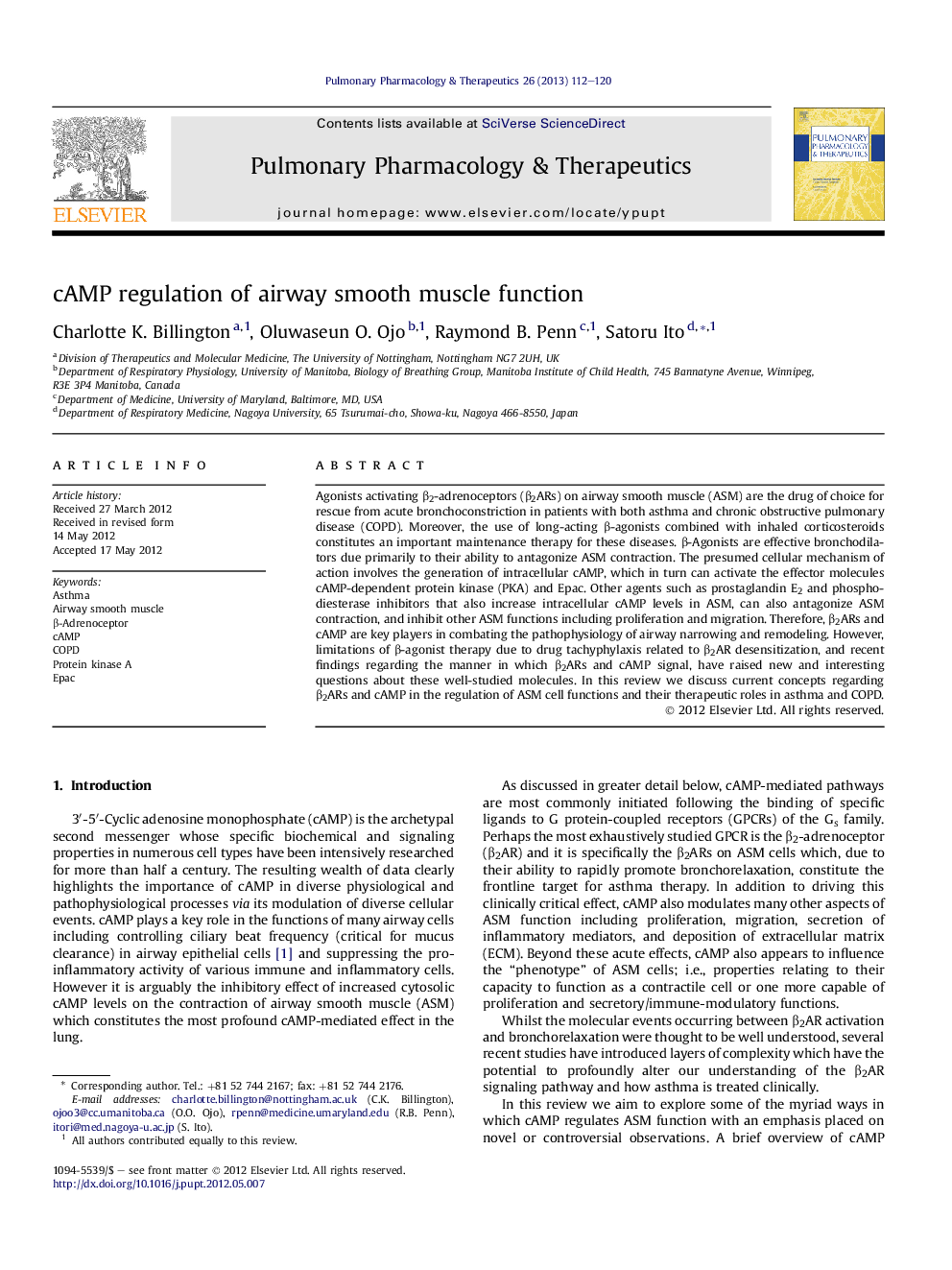| Article ID | Journal | Published Year | Pages | File Type |
|---|---|---|---|---|
| 2567339 | Pulmonary Pharmacology & Therapeutics | 2013 | 9 Pages |
Agonists activating β2-adrenoceptors (β2ARs) on airway smooth muscle (ASM) are the drug of choice for rescue from acute bronchoconstriction in patients with both asthma and chronic obstructive pulmonary disease (COPD). Moreover, the use of long-acting β-agonists combined with inhaled corticosteroids constitutes an important maintenance therapy for these diseases. β-Agonists are effective bronchodilators due primarily to their ability to antagonize ASM contraction. The presumed cellular mechanism of action involves the generation of intracellular cAMP, which in turn can activate the effector molecules cAMP-dependent protein kinase (PKA) and Epac. Other agents such as prostaglandin E2 and phosphodiesterase inhibitors that also increase intracellular cAMP levels in ASM, can also antagonize ASM contraction, and inhibit other ASM functions including proliferation and migration. Therefore, β2ARs and cAMP are key players in combating the pathophysiology of airway narrowing and remodeling. However, limitations of β-agonist therapy due to drug tachyphylaxis related to β2AR desensitization, and recent findings regarding the manner in which β2ARs and cAMP signal, have raised new and interesting questions about these well-studied molecules. In this review we discuss current concepts regarding β2ARs and cAMP in the regulation of ASM cell functions and their therapeutic roles in asthma and COPD.
